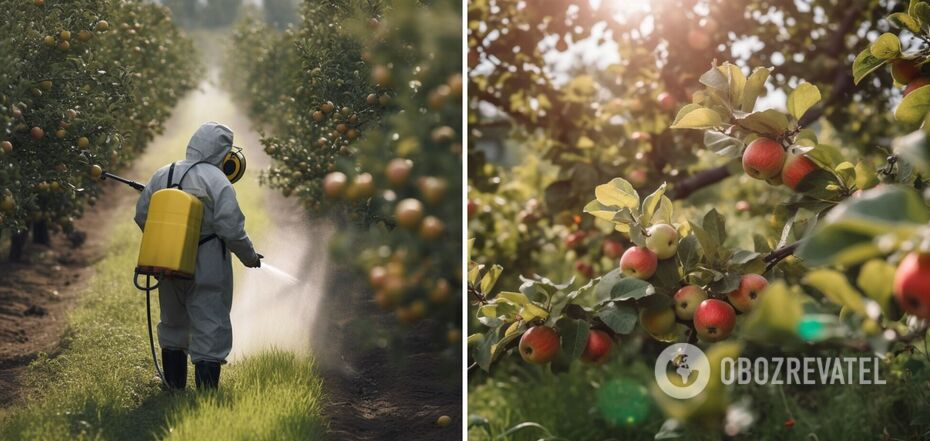Life
Get rid of pests forever: how to protect fruit trees from parasites
Fruit trees are a real ornament to any garden. Not only do they bloom beautifully in the spring, but they also bring joy to the fruit, without which it is difficult to imagine the summer. They do not need too much care, but still they need to be carefully protected from a variety of pests that can destroy the entire harvest. This can be microorganisms, insects, birds and animals.
How to protect fruit trees, asked OBOZREVATEL. We tell you the most effective recipes from all types of threats.
Keep an eye on the condition of trees
Prevention is not always sufficient to protect trees. For example, treating a tree with insecticides against insect pests without the presence of the insects themselves will only damage the fruit. Therefore, it is important to regularly monitor the condition of trees so as not to miss the emergence of a problem. Small holes in the fruit, twisted and yellowed leaves, cracked bark, the appearance of the pests themselves, etc. can be warning signs. Ideally, you should pay attention to the leaves, ovary and fruit every day. In this case, you will notice the problem at an early stage, when it is easiest to solve.
Choose the right trees
The desire to grow mango in your garden plot is wonderful in itself, but we need to face the truth - it will not take root in our latitudes, since it is not adapted to the cold winters. Therefore, you need to choose for growing in your own garden proven breeds and varieties of trees that are well tolerant of the local climate and adapted to pests.
You also need to take conditions into account. If the garden is shady, you should not choose sun-loving species - the fruits on them will not ripen properly. The soil and the amount of water the tree can receive should also be taken into account.
Make sure the garden is well looked after
For the tree to grow and bear good fruit, it must be trimmed in time. This will ensure access to light and air. Also, removing excess branches will help the plant concentrate on the quality and size of the fruit, not the quantity.
Watering and feeding the trees are also important steps in garden maintenance. So is working with fallen leaves. If it is healthy, it can be left as mulch. It will keep the roots warm in winter and retain moisture in the ground while stopping weeds from growing in the warmer months. If the leaves are damaged or infected, however, they will need to be picked up in time and disposed of properly.
Spraying is also part of the garden care package. In this way, plants can be nourished by dissolving fertilizers in water, which are absorbed through the leaves. Also by spraying, trees are protected and treated against pests and diseases.
Mechanical pest control for the garden
You can't get rid of infections or pests on a tree unless you eliminate them mechanically. Here's what you need to do to keep your garden in good condition:
- Remove damaged parts from the bark with a special tool;
- Treat trees with vinegar or lemon juice to create a toxic but generally safe barrier for insects;
- Install sticky insect traps;
- Cut back severely damaged and dead branches that may attract some insects and microorganisms.
Biological protection
In addition to traditional pesticides, various living organisms are used in the protection of fruit trees, which are natural enemies of pests, but are not harmful to the plant and the crop. Here's what you can do for it:
- Release or attract insects to the garden that will kill pests - ladybugs, chrysopus, bees, deadheads, etc;
- Plant aromatic herbs between trees, the smell of which discourages pests - mint, basil, lavender, garlic, calendula, etc.;
- Treat the garden with bacteria or fungi that are not harmful to plants, but infect pests, as deadly for caterpillars Bacillus thuringiensis.
Previously OBOZREVATEL told how to save cherries and cherry trees from the birds spoiling them.
Subscribe to the channels of OBOZREVATEL in Telegram and Viber to keep up with the latest developments.



























